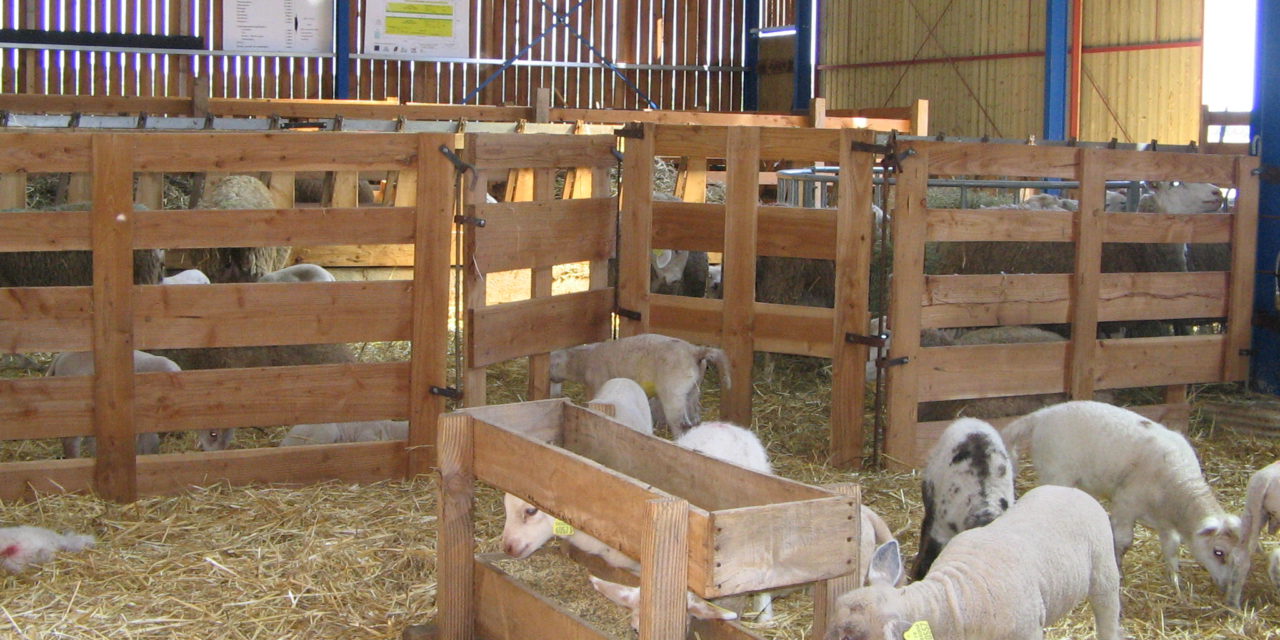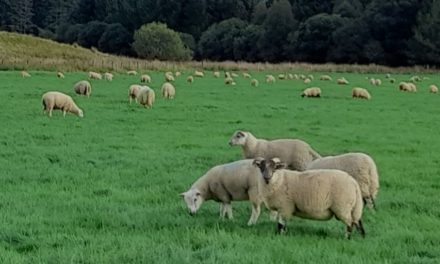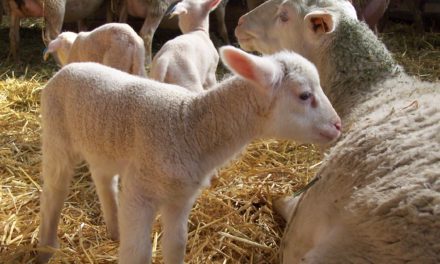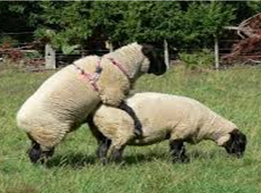This post is also available in:
![]()
![]()
![]()
![]()
![]()
Acute Death of Lambs
Factsheet name: Acute Death of Lambs
Need / Issue: Improve lamb survival
The Challenge
Acute deaths of lambs cause considerable economic loss, contribute significantly to reduced farm income in sheep production worldwide and reduced animal welfare in sheep production. Despite significant advances in genetics, nutrition, and management, the proportion of lamb deaths has remained stable at 15–20% over the past four decades. Most lamb deaths occur within the first three days after birth and infections was recognized as the main cause in almost 40% of these deaths. E. coli septicaemia and enterotoxaemia were most prevalent causes of infection. However, it is important to take in mind the stillbirths and abortions. The causes and the percentages of deaths can differ between regions depending on exposure to risk factors. Infections and insufficient intake of colostrum were identified as the most important cause of acute deaths of lambs. Moreover, the proportion of lambs dying from infection was largest in twin and triplet litters. Furthermore, mastitis, which is associated with reduced milk production and quality, or poor milk production per se, might result in inadequate milk supply to the lambs and increase the risk of lamb mortality, particularly in lambs from litters of multiples.
Topic: health/management)
Production: Dairy
Animal Category: Lamb / ewe
Current Knowledge
Enterotoxaemia
Enterotoxaemia occurs when specific bacteria (Clostridium perfringens) normally present in the gut, proliferate and produce toxins that are absorbed. Clostridia are a group of anaerobic, spore-forming and toxin-producing bacteria which cause a wide range of severe and often acute fatal diseases. They might be present in the environment for long time via forming spores. The latter means that infection of sheep by Clostridium spp. is almost unavoidable. Most clostridial diseases result from toxin production. Depending on the bacterial species, there are toxins that may cause sudden deaths, severe diarrhea or neurological signs. Absorption of toxins leads rapidly to diarrhea, convulsions and death. Death may occur so quickly that the diarrhea is never exhibited. Clinical disease cannot be eliminated by antimicrobial treatment because the cause is the toxin and not the bacteria. Therefore, prevention is the only way of prophylaxis. While modern vaccines provide excellent protection against the important clostridial diseases of sheep, many flocks are improperly vaccinated or not vaccinated at all, sometimes in an attempt to reduce production costs.
Pulpy kidney is often seen in fattening lambs between 6 months and 1 year old, associated with a change in diet such as movement onto silage aftermath or Brassica crops. This risk persists until the ruminal microflora adapt to the improved diet. Most cases present as sudden death, but animals are occasionally seen alive with non-specific neurological signs and diarrhea. In extreme cases, losses of between 10 and 15% have been reported.
Colibacillosis
Colibacillosis is also a huge problem, because of the acute deaths 2-3 days after birth of an extremely large number of newborn lambs, every year. Main symptoms are: yellow diarrhea, dehydration, lying down, reluctance to move, stomach upset (gas in the stomach), salivation, tears, shock and death.
Chlamydiosis
Ovine chlamydiosis, also known as enzootic abortion of ewes (EAE) or ovine enzootic abortion (OEA), is mainly caused by the bacterium Chlamydophila abortus (formerly called Chlamydia psittaci). It is a highly contagious infection that mainly affects small ruminants worldwide but also other mammal species (including humans), causing abortion and the premature birth of stillborn or weak offspring with severe economic impacts on the livestock industry. Chlamydial abortion typically occurs in the last 2–3 weeks of pregnancy with the appearance of stillborn lambs and inflamed placentas. However, infection can also result in the delivery of full-term stillborn lambs (Fig 1) or weak lambs that do not survive longer than 48 hours. Infected animals show no clinical illness prior to abortion, although behavioural changes and a vulval discharge may be observed in ewes within the last 48 hours of pregnancy.
Prompt isolation of aborted ewes, destruction of their placentas and dead lambs and disinfection of the abortion site are essential for limiting spread of infection. Ewes that have aborted should be culled, as they are likely to be carriers.
Risk Factors
-high stocking densities and intensive husbandry system-high contamination environment
-stressful conditions: nutrient depletion
-coinfection with viruses/protozoa

Fig 1. Typical clinical presentation of enzootic ovine abortion, showing fully formed dead lambs and necrotic placental membranes that are thickened and reddish-yellow in colour (Essig and Longbottom, 2015).
Treatment & Prevention
Enterotoxaemia
Treatment is not effective. In the face of multiple cases, surviving pen or paddock mates may be treated with antibiotics, non-steroidal anti-inflammatory drugs and vaccinated against clostridial diseases.
Control depends on vaccination and management of newborn lambs. Successful prevention can be achieved through vaccination modalities and feeding practices. Vaccination is strongly advised as the cost of dead animals soon outweigh vaccine costs. Hygiene conditions and colostrum feeding after proper vaccinations can contribute to the solution of the problem.
- Regarding vaccination modalities: A wide variety of commercial vaccines is available. Most vaccination programms target the pregnant ewe so that maximal immunity is transferred to the neonate by colostrum. Most commercial vaccines are inactivated and usually contain 2-, 4-, 7-, or 8-way combinations of clostridial organisms. Two doses with one month interval with the second boosting one month before birth seems to provide adequate protection for lambs. In addition, lambs that will be kept for reproduction should be included in the vaccination programm that is implemented for adult animals.
- Colostrum: as much as 10% of the total body weight of the lamb at the 1st 24/h must be fed to the newborn. First meal must be given as soon as possible after delivery.
- Be careful with every change in feeding. Adaptation to new eating habits (for example from colostrum to milk) should be gradual.
- Good hygiene condition in the pens of ewes during and after lambing is important.
Colibacillosis
Autogenous vaccines could be prepared and given to pregnant ewes 40-50 and 15-20 days before lambing. Careful colostrum feeding of newborn lambs is very important.
Chlamydiosis
Commercial vaccines are available on the market. If active chlamydial infection (e.g., evidence of abortion confirmed to be caused by C. abortus) is present in a flock of pregnant ewes, then the entire flock can be treated with long-acting oxytetracycline, which will reduce the severity of infection. Thus sheep should be vaccinated in the first year after infection is first diagnosed in a flock and this should be repeated after three years, or sooner in heavily infected flocks. Ewes that abort or deliver a dead or weakly lamb should be marked and immediately isolated from the other ewes. In case of a laboratory diagnosis of EAE, aborted foetuses, dead lambs, placentas and any contaminated bedding must be removed and destroyed. Lambing pens in which abortion has occurred should be cleaned and disinfected and, if possible, not reused. Reducing stocking density and disinfecting objects including bedding is strongly advised.
Main Messages to take home
- All lambs that die should be recorded (date of death, age at death, litter size, symptoms/cause of death). This information can be used by your vet to identify if there is an issue in the flock and to develop a flock health plan.
- Most lamb acute deaths occur within first 3 days of birth
- Infection is among the most important causes of lamb deaths and are potentially preventable
- Proper vaccinations in late pregnancy and providing adequate colostrum at the proper time are key factors to reducing lamb mortality.
- The colostrum could be either sourced from the mother, another ewe, frozen cow colostrum or colostrum substitute (artificial).
- The adaptation of the best hygiene practices prior to, during and after lambing could help to reduce acute deaths of lambs
- Your vet can help you to organize the proper vaccination program for your flock.







